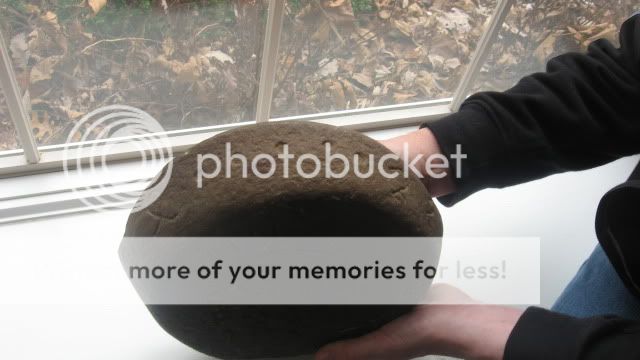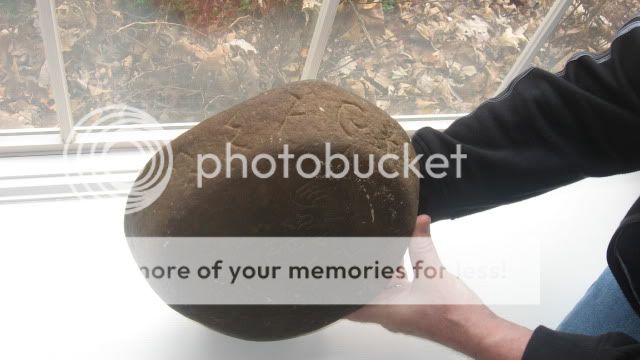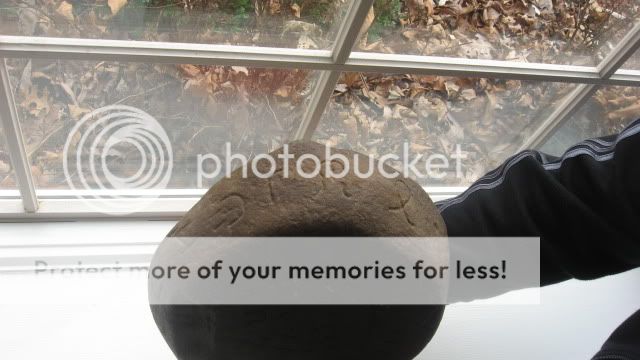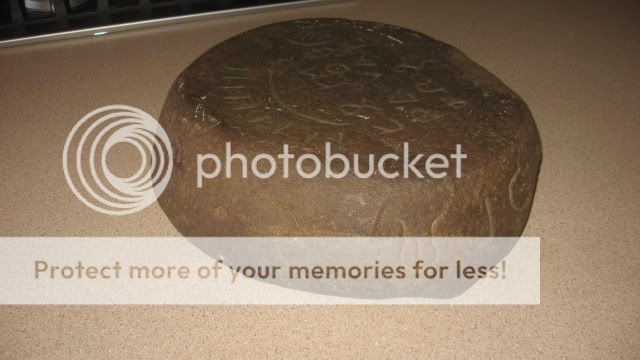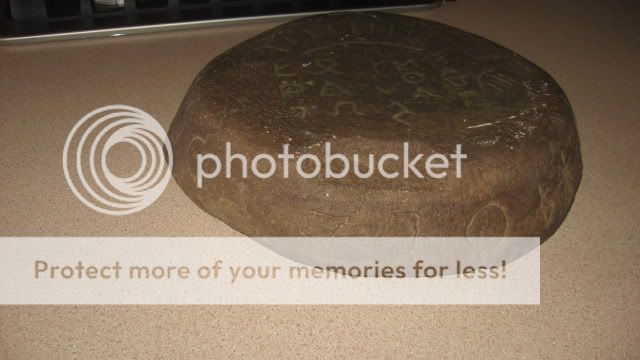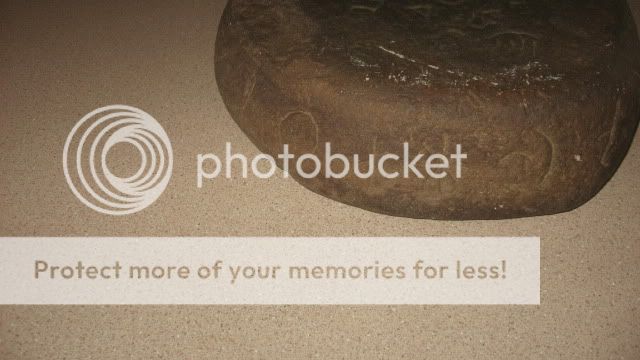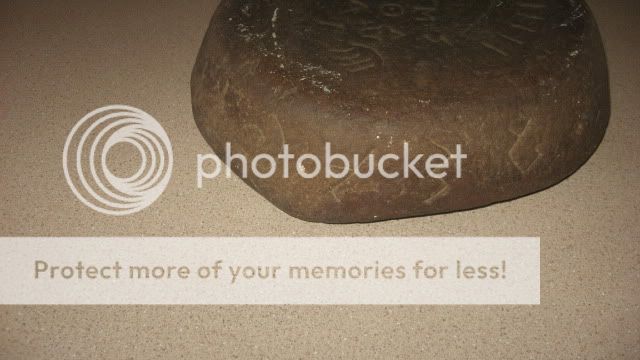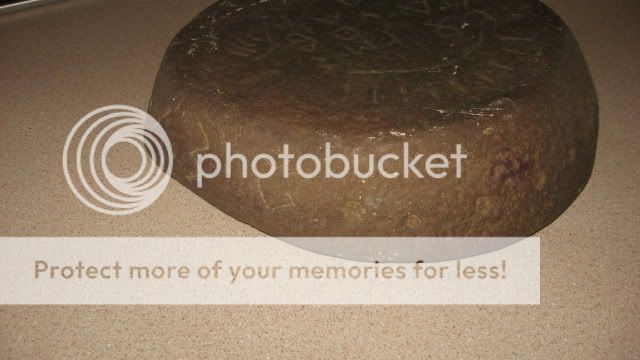It looks like you're using an Ad Blocker.
Please white-list or disable AboveTopSecret.com in your ad-blocking tool.
Thank you.
Some features of ATS will be disabled while you continue to use an ad-blocker.
share:
reply to post by bulla
And you will have the joy of naming your bowl, and if I could be so presumptions as to suggest a name for it, given my understands of it, could I suggest you call it
The ROSE bowl, or Bowl of the rose
Being the emblem of all life and wisdom, or the flower of life
The reason for which I can further explain
And you will have the joy of naming your bowl, and if I could be so presumptions as to suggest a name for it, given my understands of it, could I suggest you call it
The ROSE bowl, or Bowl of the rose
Being the emblem of all life and wisdom, or the flower of life
The reason for which I can further explain
Originally posted by IAMTAT
reply to post by 23432
Wow...Please elaborate on Maikop writing and culture...You may be on to something here.
The Adygheans (the people's own name for themselves is Adyghe) are an ancient native people of the Northwest Caucasus, better known in historical annals as Circassians (also Cherkess).
An agricultural and cattle-breeding culture arose in the Northwest Caucasus in the early Bronze age. By 3000 B.C., the Dolmen culture, whose name comes from the distinctive megaliths used as grave markers, had arisen here and reached its peak; it lasted until the last quarter of the second millennium B.C.
The area where the Caucasian dolmens are found is the ancestral home of the Adyghe-Abkhaz tribes. Today, there are five dolmen fields in the republic with about 200 whole and partly ruined dolmens.
The Maykop culture of the Kuban valley coexisted with the Dolmen culture.
The first classical monuments of the Maykop culture in the form of large burial mounds (kurgans) containing splendid articles made of precious metals were discovered in the Kuban before the Revolution.
They include the well-known kurgan excavated in Maykop in 1897 by Professor N.I. Veselovsky, which gave its name to the culture as whole. The settlements of Meshoko, Skala, Khadzhokh, and Yasenovaya Polyana are other well-known monuments of this period.
The first iron appeared here in the second millennium B.C. and led to major economic and social advances at the end of the 9th and the beginning of the 8th centuries B.C. The economic structure was represented by cattle-breeding, agriculture, metallurgy and metalworking, weaving, and spinning. This period is known in history as the Protomeotic.
The names of North Caucasian tribes, such as the Meots, Sinds, Akhei, Zikhs, and others that played a major role in the ethnogenesis of the Adyghe, first became known in about 1000 B.C. In Greek and Roman sources, they are referred to collectively as Meots, and in 1000 B.C., they occupied the eastern coasts of the Black Sea and the Sea of Azov and the Kuban valley.
www.circassianworld.com...
THE DELUGED CIVILIZATION OF
THE CAUCASUS ISTHMUS
by
REGINALD AUBREY FESSENDEN
FORMERLY
HEAD CHEMIST TO THOMAS A. EDISON;
PROFESSOR OF POST‑GRADUATE MATHEMATICS AND
ELECTRICAL ENGINEERING, UNIVERSITY OF PITTSBURGH;
ENGINEERING COMMISSIONER ONTARIO POWER COMMISSION
Copyright, 1933
By REGINALD A. FESSENDEN
All Rights Reserved
TABLE OF CONTENTS
MAPS
PAGE
INTRODUCTION
THE RECORDS OF THE PRE-DELUGE CIVILIZATION OF THE CAUCASUS ISTHMUS
1
THE HOME OF ABRAHAM
10
HOW IT WAS DISCOVERED THAT THE SO-CALLED MYTH LANDS WERE THE CAUCASUS ISTHMUS
16
FINDING A KEY TO THE SACRED WRITINGS OF THE EGYPTIANS
25
CAUCASIA, MOTHER OF THE GREAT CIVILIZATIONS
33
THE MORNING LAND OF THE CAUCASUS
35
THE ZENITH OF THE BABYLONIAN ASTRONOMERS
38
PLATO’S ATLANTIS WORD PUZZLE
40
THE EGYPTIAN TEN PRE-DELUGE KINGS OF SOLON AND PLATO
43
AN APPARENTLY DEFINITE IDENTIFICATION OF MASONS WITH THE EGYPTIAN M-S-N
45
SYNOPSIS OF SOME UNPUBLISHED CHAPTERS OF THE DELUGED CIVILIZATION
48
www.radiocom.net...
.
Phonecians just colonised Phonecia so to speak .
I believe that they were originally from north of Caucasus and they were renown for their sailing ability .
My guess is that the object had no material value but it had a practical purpose such as identification of who lives in the settlement .
reply to post by 23432
well done mate a very comprehensive overview of the time frame and its enlightened me further to what was going on
However we have a small issue that may have been somewhat of a subculture, bubbling away under the surface of our understood history, and the bowl is presenting some what of a quandary to this activity and all efforts are being trained on the symbolism at this time to uncover firstly its origin and secondly its meanings, and this may well add an entirely different aspect to our understood records of history
bulla joiner of dots
well done mate a very comprehensive overview of the time frame and its enlightened me further to what was going on
However we have a small issue that may have been somewhat of a subculture, bubbling away under the surface of our understood history, and the bowl is presenting some what of a quandary to this activity and all efforts are being trained on the symbolism at this time to uncover firstly its origin and secondly its meanings, and this may well add an entirely different aspect to our understood records of history
bulla joiner of dots
Originally posted by IAMTAT
reply to post by IAMTAT
STAMP: Appears to be a purple, downward-pointing, triangle with a thin line border follwing it's contour. There also appears to be a serpentine shape or perhaps a letter within.
I'm wondering if that's an importer/exporter's/auction house's stamp -- given that purple was a VERY expensive color to make until modern times.
I've hand drawn a copy of the symbols that I see. I know I've seen a few of them somewhere before (particularly the one that seems to start it and looks like a "t") -- but there's no easy search for something like that. I think that the symbol at the top is a symbol of either the sunrise or or sunset represents the horizon (east or west). There's one symbol that I think represents a hand with four fingers.
I'm not seeing any similarities to the Maikop inscription... and if this had been a piece from the Maikop dig, it would have been hauled away to a university for study and never gotten into private hands. The fact that it was in private hands is interesting.
(this is just a placeholder note to let you know I haven't forgotten this and am still trying to get a better definition of what it might be.)
edit on 4-12-2011 by Byrd because: (no reason given)
reply to post by Byrd
Thanks for your expert time and interest in this Byrd.
The purple STAMP is, as you've pointed out, probably modern...although, were not the Phoenicians heavily involved in the indigo dye production and transport trade? If I'm not mistaken, their name was derived from this highly-treasured purple dye, which not only did not fade over time, but actually became more intense in color with age.
Thanks for your expert time and interest in this Byrd.
The purple STAMP is, as you've pointed out, probably modern...although, were not the Phoenicians heavily involved in the indigo dye production and transport trade? If I'm not mistaken, their name was derived from this highly-treasured purple dye, which not only did not fade over time, but actually became more intense in color with age.
I'll agree that the stamp is "recent". Any dye used then would have faded into obscurity.
@byrd: I too have have copied the symbols, and am posting here to let TAT know we haven't forgotten his contributions to this thread. I have been working in GIMP, re-drawing the unknown symbols, and doing google picture searches to help identify the unknown symbols. There are 9 I am unsure of, but google has identified 4 of them, and yet the others are elusive.
The script bothers me, and I am leaning towards a generational piece, where other symbols have been added over time. To me, so far, that is the only way to describe the cross-cultural scripting.
I will say I do believe that all the symbols on the bowl were not added at the same time. There should be a basic script in there, and then a subset to define as the additions. It's a matter of determining the original script, accepting a geographic location, then extrapolating possible influences in that geographic location. Quite the puzzle indeed.
@byrd: I too have have copied the symbols, and am posting here to let TAT know we haven't forgotten his contributions to this thread. I have been working in GIMP, re-drawing the unknown symbols, and doing google picture searches to help identify the unknown symbols. There are 9 I am unsure of, but google has identified 4 of them, and yet the others are elusive.
The script bothers me, and I am leaning towards a generational piece, where other symbols have been added over time. To me, so far, that is the only way to describe the cross-cultural scripting.
I will say I do believe that all the symbols on the bowl were not added at the same time. There should be a basic script in there, and then a subset to define as the additions. It's a matter of determining the original script, accepting a geographic location, then extrapolating possible influences in that geographic location. Quite the puzzle indeed.
reply to post by IAMTAT
First off, many thanks to Byrd, Bulla, Druid, 23432...and so many others for your ongoing contributions of genuine expertise, interest and time toward helping to unravel this mystery.
For my own speculation, though admittedly inferior to the specialized expertise regarding matters archeological and linguistic which all of you have brought to bear, I have been living with this piece for a number of years now; examining it often with curiousity and wonder.
My sense or feeling about this enigmatic antiquity is that it may actually be trying to chronicle a history of some ancient people.
The concave upper surface of this bowl has a decidedly 'nautical' or navigational feel to it...almost as if it represents a crude map detailing a sea journey.
The oviod shape with the series of dots around it, feels as if it could represent an ocean-going vessel full of people (the multitude of dots around it). The star and sun signs on this side of the bowl might be a map of the sea part of these people ancient journey from their motherland or home port (represented by the large bulb or womb-like shape in the center...this could be the starting point of their journey).
The writing around the top of the concave upper surface of the bowl...picked up by the continued writing along the bowl's side (outer rim)...hold the body of the narrative for this journey.
The overall symbols and letters on the bottom side of this bowl have a very terrestrial feel to them; perhaps telling the portion of their journey where these people make land and settle. Certainly, the horizon line with sunrise/sunset delineates 'land'. The columns of letters below this horizon may denote the names of the various families or tribes who ultimately settled on this foreign shore after a long voyage.
Again, these are only my impressions...but I can't escape the very strong feeling that this mysterious bowl may have been designed as a historical record or marker for an ancient seafaring peoples' journey to settle in a new land.
First off, many thanks to Byrd, Bulla, Druid, 23432...and so many others for your ongoing contributions of genuine expertise, interest and time toward helping to unravel this mystery.
For my own speculation, though admittedly inferior to the specialized expertise regarding matters archeological and linguistic which all of you have brought to bear, I have been living with this piece for a number of years now; examining it often with curiousity and wonder.
My sense or feeling about this enigmatic antiquity is that it may actually be trying to chronicle a history of some ancient people.
The concave upper surface of this bowl has a decidedly 'nautical' or navigational feel to it...almost as if it represents a crude map detailing a sea journey.
The oviod shape with the series of dots around it, feels as if it could represent an ocean-going vessel full of people (the multitude of dots around it). The star and sun signs on this side of the bowl might be a map of the sea part of these people ancient journey from their motherland or home port (represented by the large bulb or womb-like shape in the center...this could be the starting point of their journey).
The writing around the top of the concave upper surface of the bowl...picked up by the continued writing along the bowl's side (outer rim)...hold the body of the narrative for this journey.
The overall symbols and letters on the bottom side of this bowl have a very terrestrial feel to them; perhaps telling the portion of their journey where these people make land and settle. Certainly, the horizon line with sunrise/sunset delineates 'land'. The columns of letters below this horizon may denote the names of the various families or tribes who ultimately settled on this foreign shore after a long voyage.
Again, these are only my impressions...but I can't escape the very strong feeling that this mysterious bowl may have been designed as a historical record or marker for an ancient seafaring peoples' journey to settle in a new land.
Originally posted by IAMTAT
reply to post by IAMTAT
My sense or feeling about this enigmatic antiquity is that it may actually be trying to chronicle a history of some ancient people.
It's too brief for that, and of the wrong structure. I have seen legendary tales chronicled in rock art (Ka'upe the Kapua in Hawaii) by pre-literate people (as well as accounts of historic battles from the viewpoint of the Native Americans at the Hueco Tanks rock art site... and others.)
The concave upper surface of this bowl has a decidedly 'nautical' or navigational feel to it...almost as if it represents a crude map detailing a sea journey.
Do you have a picture of the rim? It *might* have been a navigation aid, yes... I don't know how the people of that area navigated the ocean. I do know that the Polynesians made star and current maps out of bamboo.
The oviod shape with the series of dots around it, feels as if it could represent an ocean-going vessel full of people (the multitude of dots around it). The star and sun signs on this side of the bowl might be a map of the sea part of these people ancient journey from their motherland or home port (represented by the large bulb or womb-like shape in the center...this could be the starting point of their journey).
Can you copy out the inscription (or place paper over it and do a "rubbing" of the symbols)?
Again, these are only my impressions...but I can't escape the very strong feeling that this mysterious bowl may have been designed as a historical record or marker for an ancient seafaring peoples' journey to settle in a new land.
Usually that kind of record is made by the most skilled craftsmen the group has and is put on a monument of some sort rather than a vessel and they're generally associated with pictures. The bowl MIGHT have been painted (hard to say) -- let's see what the symbols on the bowl are.
Since it was in the hands of an antiquity dealer before it reached you, I suspect that experts have seen it somewhere along the line. Artifacts can go for top dollar if they're significant in some way -- and an object this size could fetch millions of dollars if it is tied to an important site and has an important inscription on it.
Antiquities dealers aren't known for selling priceless treasures at low rates to anyone.
So... IF that was true (a big assumption) and the inscription is a valid one (a big assumption) then this is one of dozens of similar objects found at a large site (like a city.) In that case, it's really curious that they didn't reserve it for study, since objects with writing are considered very valuable to the scholars.
Anyway... a look at the letters would be lovely. Can you manage it?
Originally posted by Druid42
The script bothers me, and I am leaning towards a generational piece, where other symbols have been added over time. To me, so far, that is the only way to describe the cross-cultural scripting.
There's also the possibility of "hoax" with the writing added much later (as in the case of the James Ossuary.) In other words, the bowl is quite genuine and a nice example of hundreds that they found at the same site -- but someone later decided to "improve" it so it would sell for a much higher amount.
I will say I do believe that all the symbols on the bowl were not added at the same time. There should be a basic script in there, and then a subset to define as the additions. It's a matter of determining the original script, accepting a geographic location, then extrapolating possible influences in that geographic location. Quite the puzzle indeed.
The patina (as best I can judge) looks consistent, though. But you're right about the approach. I'm not seeing any alphabet or symbol set that has all or most of those elements.
...back to the hunt.
Originally posted by ArcAngel
Sorry about that.
Here they are again.
edit on 26-11-2011 by ArcAngel because: (no reason given)
Originally posted by MysteriousEyes1
These are the photos of the rim.
Originally posted by IAMTAT
reply to post by Druid42
Thanks for your patience. As requested...here are some additional photos of the characters along the side (rim) of this bowl. I hope this helps. -TAT
reply to post by IAMTAT
Hey,TAT,take at look at this and see if you notice any similarities to your bowl.
Sorry if it is so large,but it made it easier to see.
Hey,TAT,take at look at this and see if you notice any similarities to your bowl.
Sorry if it is so large,but it made it easier to see.
edit on 4-12-2011 by kdog1982 because: (no reason given)
reply to post by kdog1982
Thanks kdog...there certainly appears to be several letters which are similar.
Thanks kdog...there certainly appears to be several letters which are similar.
reply to post by kdog1982
Yes K there is the Zero with the dot @ center and some others appear
A further note and over and above the viking navigational stone, the Sapphire stone is the magnetic stone on earth the basis of Carborundum it being Hexagonal, in crystallography, and I have personally dug sapphire stones that have an internal silt making that is always repeated in regardless of which that are on the Atomic scale set at precisely
120 degrees atomic, when one grinds the stone to two different sides according to this making, one can then triangulate precisely, upon any fixed landmarks the sun or indeed star systems, the name of this has alluded me I think something like the KELSOs LEG used upon maps to scribe a line for triangulation and is different than the star sapphire, that it is said can locate the sun behind clouds etc which is a silver sheen that exhibits a star sheen, with star pointers that get longer or shorter depending in which direction you turn the stone
Yes K there is the Zero with the dot @ center and some others appear
A further note and over and above the viking navigational stone, the Sapphire stone is the magnetic stone on earth the basis of Carborundum it being Hexagonal, in crystallography, and I have personally dug sapphire stones that have an internal silt making that is always repeated in regardless of which that are on the Atomic scale set at precisely
120 degrees atomic, when one grinds the stone to two different sides according to this making, one can then triangulate precisely, upon any fixed landmarks the sun or indeed star systems, the name of this has alluded me I think something like the KELSOs LEG used upon maps to scribe a line for triangulation and is different than the star sapphire, that it is said can locate the sun behind clouds etc which is a silver sheen that exhibits a star sheen, with star pointers that get longer or shorter depending in which direction you turn the stone
reply to post by bulla
You are referring to the sun stone used by the vikings for navigation.
There are a few threads on this I do believe.
Here it is,
www.abovetopsecret.com...
You are referring to the sun stone used by the vikings for navigation.
There are a few threads on this I do believe.
Here it is,
www.abovetopsecret.com...
reply to post by kdog1982
Yes K but I think you will find a more existence, explanation on brotherhood of the serpents
Yes K but I think you will find a more existence, explanation on brotherhood of the serpents
I took the liberty to focus on the central figure,
What does it look like? A head? A bowl ?

So far i found it most resembling a bowl on a pillar, and in that bowl a ball objects floats, rests.

One funny thing is when you change the point of view straight to the top, as i did below, you will find the top-view gives you a nice resemblance of the All Viewing Eye. I know, i have a lot of fantasy, but it is remarkable. And a crystal bowl is in a lot of legends and stories.
So could it be a early depiction of the all seeing eye.. *-)

What does it look like? A head? A bowl ?

So far i found it most resembling a bowl on a pillar, and in that bowl a ball objects floats, rests.

One funny thing is when you change the point of view straight to the top, as i did below, you will find the top-view gives you a nice resemblance of the All Viewing Eye. I know, i have a lot of fantasy, but it is remarkable. And a crystal bowl is in a lot of legends and stories.
So could it be a early depiction of the all seeing eye.. *-)

edit on 5-12-2011 by EartOccupant because: (no reason given)
edit on 5-12-2011 by EartOccupant because: (no reason
given)
reply to post by EartOccupant
Fascinating EartOccupant! A little out-of-the-bowl perspective in viewing this really brought out a great idea here. Your wonderfully animated idea really makes good sense...especially when one considers how unusually shallow the concavity of this bowl is. GREAT WORK!
Fascinating EartOccupant! A little out-of-the-bowl perspective in viewing this really brought out a great idea here. Your wonderfully animated idea really makes good sense...especially when one considers how unusually shallow the concavity of this bowl is. GREAT WORK!
new topics
-
Israel attacking Iran again.
Middle East Issues: 19 minutes ago -
Michigan school district cancels lesson on gender identity and pronouns after backlash
Education and Media: 23 minutes ago -
When an Angel gets his or her wings
Religion, Faith, And Theology: 1 hours ago -
Comparing the theology of Paul and Hebrews
Religion, Faith, And Theology: 2 hours ago -
Pentagon acknowledges secret UFO project, the Kona Blue program | Vargas Reports
Aliens and UFOs: 3 hours ago -
Boston Dynamics say Farewell to Atlas
Science & Technology: 3 hours ago -
I hate dreaming
Rant: 3 hours ago -
Man sets himself on fire outside Donald Trump trial
Mainstream News: 5 hours ago -
Biden says little kids flip him the bird all the time.
Politicians & People: 5 hours ago -
The Democrats Take Control the House - Look what happened while you were sleeping
US Political Madness: 6 hours ago
top topics
-
The Democrats Take Control the House - Look what happened while you were sleeping
US Political Madness: 6 hours ago, 17 flags -
In an Historic First, In N Out Burger Permanently Closes a Location
Mainstream News: 8 hours ago, 14 flags -
Biden says little kids flip him the bird all the time.
Politicians & People: 5 hours ago, 8 flags -
A man of the people
Medical Issues & Conspiracies: 13 hours ago, 8 flags -
Man sets himself on fire outside Donald Trump trial
Mainstream News: 5 hours ago, 7 flags -
Pentagon acknowledges secret UFO project, the Kona Blue program | Vargas Reports
Aliens and UFOs: 3 hours ago, 5 flags -
4 plans of US elites to defeat Russia
New World Order: 15 hours ago, 4 flags -
Sheetz facing racial discrimination lawsuit for considering criminal history in hiring
Social Issues and Civil Unrest: 6 hours ago, 3 flags -
Boston Dynamics say Farewell to Atlas
Science & Technology: 3 hours ago, 3 flags -
Are you ready for the return of Jesus Christ? Have you been cleansed by His blood?
Religion, Faith, And Theology: 11 hours ago, 3 flags
active topics
-
Are you ready for the return of Jesus Christ? Have you been cleansed by His blood?
Religion, Faith, And Theology • 20 • : RAY1990 -
Israel attacking Iran again.
Middle East Issues • 7 • : Dandandat3 -
Israeli Missile Strikes in Iran, Explosions in Syria + Iraq
World War Three • 103 • : dragonridr -
The Democrats Take Control the House - Look what happened while you were sleeping
US Political Madness • 63 • : NoCorruptionAllowed -
Michigan school district cancels lesson on gender identity and pronouns after backlash
Education and Media • 2 • : MetalThunder -
Candidate TRUMP Now Has Crazy Judge JUAN MERCHAN After Him - The Stormy Daniels Hush-Money Case.
Political Conspiracies • 402 • : Zanti Misfit -
Thousands Of Young Ukrainian Men Trying To Flee The Country To Avoid Conscription And The War
Other Current Events • 50 • : DBCowboy -
I hate dreaming
Rant • 6 • : Hecate666 -
Man sets himself on fire outside Donald Trump trial
Mainstream News • 32 • : cherokeetroy -
Pentagon acknowledges secret UFO project, the Kona Blue program | Vargas Reports
Aliens and UFOs • 5 • : Ophiuchus1



